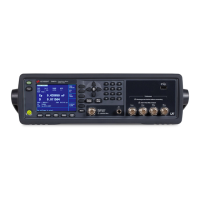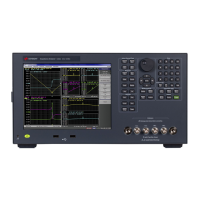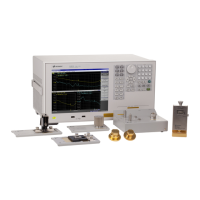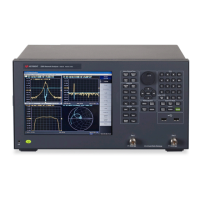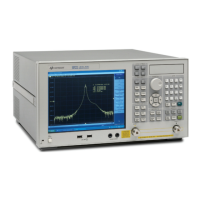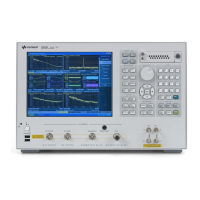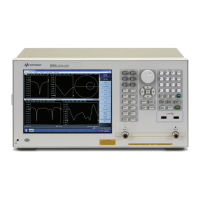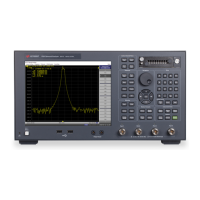30 Keysight E4980A/E4980AL Precision LCR Meter
Troubleshooting
To Troubleshoot the Instrument
4-
To Troubleshoot the Instrument
This section describes the basic procedural flow of troubleshooting when
servicing the E4980A/ E4980AL. The primary procedural tool in this section is
the flowchart. The flowchart contains the entire troubleshooting path from a
failure symptom to the isolation of faulty assembly, and will direct you to the
completion of repair in an ordinary manner through the possible failure
symptoms. Reference letters (Yes/No) on the flowcharts point to procedural
steps that briefly explain the troubleshooting method to be performed next.
Primary Trouble Isolation
The primary trouble isolation in Figure 4-1 is to help direct you to the correct
section for troubleshooting the E4980A/ E4980AL.
Step 1. Turn the E4980A/ E4980AL power on
With the E4980A/ E4980AL plugged in and the power turned off, the front
panel orange standby LED should be on. When the front panel power switch
is turned on, the orange LED should go out and the yellow-green LED should
come on. Also, the fan should start rotating. In case of unexpected results, go
to “Power On Sequence Troubleshooting” on page 32.
Step 2. Check the display
• The power on test is executed once automatically before the
measurements start. If the power on test fails, go to “Troubleshooting
Using Service Function” on page 36.
• If one of the following error messages A1 EEPROM write error, CPU Bd
EEPROM write error, CPU Bd FLASH ROM write error, Fan failed, or Power
failed is displayed during the measurement process, go to “Power On
Sequence Troubleshooting” on page 32 (check booting process).
Step 3. Check the basic function
If the front-panel, LCD display, data storage, remote interface or another
function (except for measurement part) does not work correctly, go to
“Function Specific Troubleshooting” on page 47.
Step 4. Check the measurement function
If the E4980A/ E4980AL fails any of the performance tests, go to
“Performance test failure troubleshooting” on page 65.
A faulty part should be replaced as outlined in Chapter 5 which gives
replacement procedures for each part. The procedures required after part
replacement are given in Chapter 6.
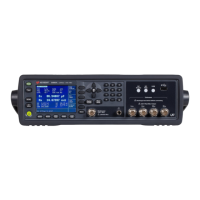
